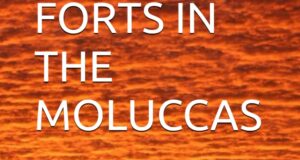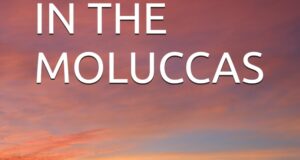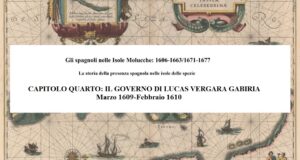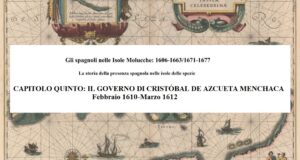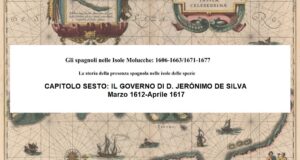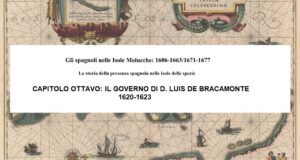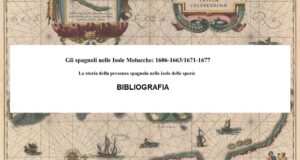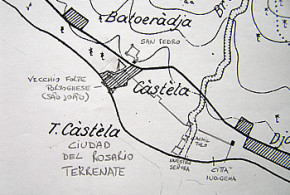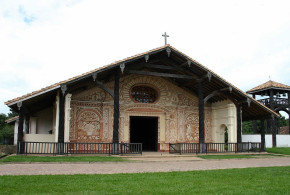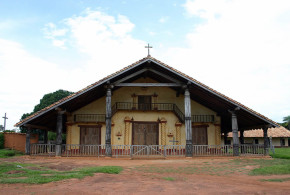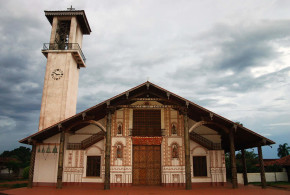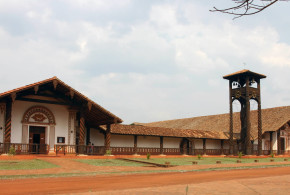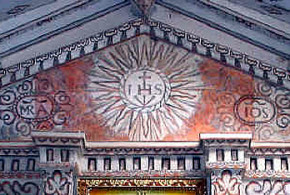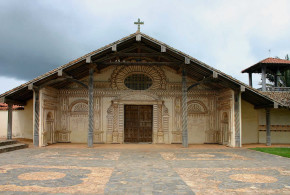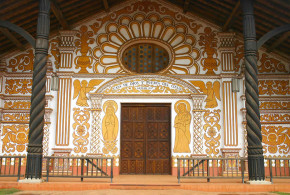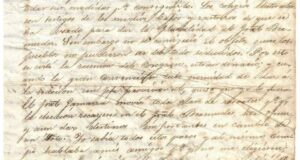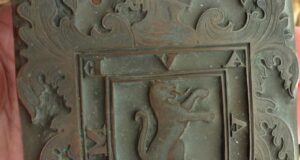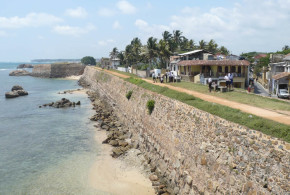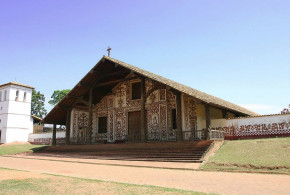This post is also available in:
![]() Italiano
Italiano
Written by Marco Ramerini – 2021
In 1618, three very bright comets were visible in Europe in the space of a few months. A very rare event, which we approached in 1996-1997 with the two spectacular end-of-the-century comets: Hyakutake and the even more spectacular Hale-Bopp, which was visible to the naked eye for 18 months. The three comets of 1618 were also all easily visible to the naked eye. These comets also had the distinction of having been the first comets to be observed also using the astronomical telescope.
The great comet of 1618 in the sky over Augsburg.
The first comet, cataloged today with the name of C/1618 Q1, was seen in European skies at the end of August 1618. It was in fact observed for the first time in Hungary on August 25, 1618. Even the astronomer Kepler managed to observe it between 1 and on 25 September 1618. The second comet, cataloged as C/1618 V1 was seen in early November 1618. This comet was discovered on 10 November in Sicily, and also seen in Rome on the same day.
The third comet was the most spectacular and by far the brightest of the three. This comet has been cataloged as comet C/1618 W1. In Europe, the third comet was discovered on the morning of November 29 by the famous German astronomer Johannes Kepler, who observed the sky from the city of Linz in Austria. The comet had, as often happens with very bright comets, a double tail. The comet was also visible in broad daylight for a certain period. Its tail stretched across 100° of sky. The comet reached a magnitude between 0 and 1 on November 29. It was observed for about three months, between the end of November 1618 and January 1619.
Among the astronomers who made observations of this comet we find the Jesuit Orazio Grassi in Rome, Pierre Gassendi in Aix-en-Provence, Wilhelm Schickard in Württemberg. The Danish Christen Sørensen Longomontanus, observed a tail of more than 100° in Copenhagen on December 10th. The Dutchman Snellius (Willebrord van Roijen Snell) observed the comet in Leiden. The Swiss Jesuit Johann Baptist Cysat observed the comet from Ingolstadt.
Strangely it seems that none of these comets were observed by Galileo Galilei who was in bed at that time suffering from arthritis and who seems not to have seen even the brightest comet. For this fact I have my own explanation: Galileo did not believe that comets were celestial objects and for this reason perhaps he did not observe them, but I want to believe that he will certainly have given them a look. Galileo never explicitly stated that comets were an illusion, but merely questioned whether they were real or an optical illusion. On the subject he also had an exchange of views with the Jesuit Orazio Grassi who instead stated that comets were celestial bodies. Small treatises on the subject were published by the two astronomers, in some cases using pseudonyms. Orazio Grassi in 1619 published the “De tribus cometis anni MDCXVIII disputatio astronomica”1, explaining his ideas in this regard. Galileo replied through a friend of his, Mario Guiducci, writing the “Discorso delle comete”2. Two other publications followed: Orazio Grassi wrote the treatise “Libra astronomica ac philosophica”3 and Galileo wrote the “Saggiatore”4.
The great comet of 1618 in the sky over Heidelberg.
Regarding this comet there are testimonies of observations from other parts of the world. Two Chinese texts report that a comet was seen on the morning of November 26th. Its tail was more than 10 degrees long and directed southeast. The Spanish ambassador to the Persian court, García de Silva Figueroa, testifies that he saw the comet in Isfahan in present-day Iran. Other sightings were also reported in Korea and the Philippines.
COMETS SEEN FROM THE SPICE ISLANDS: THE MOLUCCAS
The islands formerly known as Moluccas or Spice Islands were five islands of volcanic origin (Ternate, Tidore, Moti, Makian and Bacan) located west of the coast of the island of Halmahera, in the Indonesian archipelago, just straddling the Equator. These islands were the only ones in the world where in the sixteenth and seventeenth centuries the clove plant grew naturally, a plant of the Myrtaceae family, whose botanical name is Caryophyllus Aromaticus (Eugenia Caryophyllus, Syzygium Aromaticum). First the Portuguese, in the sixteenth century, and then the Spanish and the Dutch, in the seventeenth century, controlled these islands militarily. Between 1606 and 1663, the Spanish maintained garrisons on the islands of Ternate and Tidore and on some other outlying islands. Members of various religious orders had also arrived with the Iberian troops.5
Studying a handwritten document6 of a Spanish Franciscan friar residing in the Spice Islands, the Moluccas, then partly under Spanish control, I found some mentions of these three comets.
The friar is Father Gregorio de San Esteban and the document I am referring to is his “Memoria y Relación e historia verdadera de lo sucedido en las Islas Molucas 1609 – 1619” a copy of which is kept in the Franciscan Ibero Oriental Archive in Spain. I was able to view two “modern” handwritten copies of this interesting document. Both contain descriptions of the three comets.
In his “Memoria y Relación…” Father Gregorio de San Esteban dedicates a small three-page chapter to the three comets entitled “De las señales que en el fin de este año se bieron que fueron grandes y de los demas que succedio hasta el fin de el”. The subtitle reads: “Cometas y tomas de sitios”.
According to the description given by Father Gregorio de San Esteban, the first two comets he saw in first person, while as regards the “supposed” and dubious third comet, it is clear from the text that he did not see it, but reports the testimonies of others.
From the observation dates it is clear that what Father Gregorio de San Esteban indicates as the first comet is the second comet observed in Europe, cataloged as C/1618 V1 and which was seen in early November 1618. While the second comet is certainly the great comet of 1618, that is what the European chronicles describe as the third comet, and which has been cataloged as comet C/1618 W1.
Map of the Maluku Islands from 1630. Willem Janszoon Blaeu
THE FIRST COMET:
On a Friday, November 9, 1618, at four in the morning, a comet appeared in the east, over the Moluccas Islands. This is the description that Father Gregorio de San Esteban gives of it: “En nueve dia del mes de Noviembre de este año de 1618. Dia viernes a las quatro de la madrugada aparecio una cometa al Oriente sobre esta Islas Molucas a la quarta la suerte la qual era de hechura de una palma muy grande cuyo remate se der un baua al nordeste era el color blanque sino sin ninguna mescla de otro color, su nascimiento era una pequeña estrella que apena se deuisaua, su grandeza seria a nuestro parecer como ocho o dies picas de largo = duro por espacio de mes y medio tres dias mas o menos: su curso fue apartandose hacia el sur por el tiempo que duro”.
As written above, according to the testimonies that I have found this comet seems to have been observed in Europe starting from November 10th or 11th. So the testimony of Father Gregorio de San Esteban who reports seeing the comet on November 9, 1618 could be the first observation of this comet. If this were true (but I have not found if and when it was observed in China and other parts of the world), with today’s canons he would be considered the discoverer of the comet and the name of the comet would be attributed to him.
In his text then Father Gregorio de San Esteban gets lost in astrological disquisitions on the meaning of the passage of this comet. Here transpires all the superstition of his times. But in the text, in addition to ridiculous astrological beliefs, he informs us in a couple of passages of the comet’s position in the celestial vault, such as the fact that the comet was seen to be born when it was in the constellation of Scorpius, he also informs us that the comet was heading towards his motion to the east.
For the astrological explanation, Father Gregory cites an Afghan mathematician and astrologer “Al Bomafsar”, who was Latinized in Albumasar, but whose full name was: Abū Maʻšar Gaʻfar ben Muḥammad ben ʻUmar al-Balẖi. He was one of the best-known astrologers of the Abbasid court in Baghdad, he was born in Balkh in present-day Afghanistan in 787, just over 130 years after the Arab conquest of Persia and the fall of the Sasanian Empire. The book to which Father Gregory refers is the “De magnis coniunctionibus annorum reuolutionibus ac eorum profectionibus octo continens tractatus” also published in Europe in various editions.7
Father Gregorio reports: “Segun un astrologo arabigo llamado Al Bomafsar en el libro quinto (de magnis conjuncionibus) en la ultima diferencia [dicon] este color grandeza y hachura que significa aflicion en los hombres y es de naturaleza de Jupiter y asi en los hombres jubenales hara su efecto en emfermedades naturales y el salir al oriente significa que [comencuaram] presto sus efectos en angustia de los hombres y poca obediencia a los Reyes: Abra salud el oriente = el ser en el inbierno significa muchas nouedades, nascio el signo del escorpion enrracon de esto segnifica pelea entre Reyes y potentados = abra muchas aguas nosibas y destruyadoras de los frutos = abra mucha turbacion de vientos = y por ser de la naturaleza de Jupiter amenara de los Reys, gouernadores, principes y poderosos y finalmente amenara a todos los sanguineos = Dios sobre todo”.
THE SECOND COMET:
This second comet was seen by Father Gregorio de San Esteban on November 26, 1618, Monday. The tail was small at first but then grew considerably. It remained visible for about a month “poco mas o menos” its direction was towards the north “mas de los que el de la otra”. Also of this comet, based on what I have found, the father Gregorio can be considered the discoverer (according to modern canons) or at least the co-discoverer, in fact the oldest date of sighting cited is that of two Chinese texts which report that a comet was seen on the morning of November 26, the same day that Friar Gregorio de San Esteban saw it. It must be said that the Moluccas are located further east than China and therefore it is very probable that Father Gregorio actually saw the comet a few hours before the Chinese.
The great comet of 1618 in the sky over Frankfurt am Main.
“Biose una cometa en la parte del Oriente tambien al Leste su principio era una estrella grandes su cola a los principios era pequena pero despues se hizo grande su color era algo rojo el fin de la cola mirava al sueste pero el cuerpo mirava al Norte su hechura por la estrella era rrosa = nacio en veinte y seis de Noviembre dias lunes duro por espacio de un mes poco mas o menos su curso era hacia el norte y mas de los que el de la otra”.
As highlighted at the beginning of this paper, this is certainly what European chronicles indicate as the third comet of 1618. This was the most spectacular and by far the brightest of the three comets. This comet is now cataloged as comet C/1618 W1.
Also on this comet Father Gregorio indulges himself in listing the effects believed on the basis of the book of the Afghan astrologer. But even here he informs us that the comet was first seen in the constellation of Sagittarius.
Under the title ”Significaccion de la segunda cometa” it reads: “Segun el astrologo alegado su significacciones esta en que al color y hechura significante este de poderosa = y el salir al Oriente comenrara muy prestos sus efectos en gente [moza] y en las plantas y frutos = salio en el signo sagitario y ansi significa muerte de Reyes: y fuerça de Reyes sobre el pueblo en pedir dinero: significa oprecion en los hombres? grandes calores, poco fructos en las palmas: fortaleça en las enfermedades por tres meses, nuevas de guerras, terremotos, rrobos prosperidad en las ererades = es de la naturaleza de el sol y assi significa mucho calor y sequedad y este [relidad] muerte de Rey y acontecimentos de muchas cossas y muchas mudanças”
THE THIRD COMET:
“El dia que salio esta segunda cometa en Tidore pario una otra, tres perros el uno con tres manos y sus dos pies y otro siego y el otro [bierro?] dice si por cossa mostruosa”.
Regarding the third comet, it is clear from the lines that Father Gregorio de San Esteban did not see it, but he informs us that someone, on the nearby island of Tidore, saw one night a white (cross? or light?) in the east above the Moluccas, while others say they saw another comet. “Algonos dicen vieron una [crus? lus?] una noche, blanca a oriente sobre estas Islas y otros dicen vieron otra cometa. Dios nuestro señor aya missericordia…”
This testimony prevents for lack of information to clarify what had been seen by the witnesses. But I think it certainly does not refer to a new comet. The fact that the comet was only seen for one day, after the other one had disappeared, that Father Gregorio did not see it and that he too mentions this third comet with dubious words makes me lean towards a false sighting or the usual comet (the second one mentioned by Father Gregorio) sighted one last time.
The document continues “Las cometas sobre dichas començaron en breve a hacer efectos en estas islas porque sin pensar en guerra sea entendido tan cruel como la quemas entre tidores y terrenates …” then the friar continues describing the war events that occurred in those years in the islands.
NOTES:
1Orazio Grassi “De tribus cometis anni MDCXVIII disputatio astronomica publice habita in Collegio Romano Societatis Iesu”, 1619
2Mario Guiducci “Discorso delle comete”, 1619
3Lotario Sarsi “Libra astronomica ac philosophica”, 1619
4Galileo Galilei “Il Saggiatore, nel quale con bilancia esquisita e giusta si ponderano le cose contenute nella Libra astronomica e filosofica di Lotario Sarsi Sigensano”, 1623
5For a more detailed picture of the history of the Moluccas between the sixteenth and seventeenth centuries see: Marco Ramerini “The Spaniards in the Moluccas, 1606-1663/1671-1677” Pubblicato in: https://www.colonialvoyage.com/i-primi-contatti-degli-spagnoli-con-le-isole-molucche/
6 Gregorio de San Esteban “Memoria y Relación e historia verdadera de lo sucedido en las Islas Molucas 1609 – 1619” manuscript present in the Franciscan Ibero Oriental Archive. I have to thank Prof. Florentino Rodao for sending me the files of this precious document.
7The work was probably written around 848. It was first translated into Latin by John of Seville in 1133, as “Introductorium in Astronomiam”, and then, as “De magnis coniunctionibus”, by Herman of Carinthia in 1140. Herman of Carinthia’s translation, “De magnis coniunctionibus ”, was first printed by Erhard Ratdolt of Augsburg in 1488/9. It was printed again in Venice, in 1506 and 1515.
This post is also available in:
![]() Italiano
Italiano
 Colonial Voyage The website dedicated to the Colonial History
Colonial Voyage The website dedicated to the Colonial History

